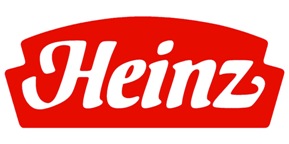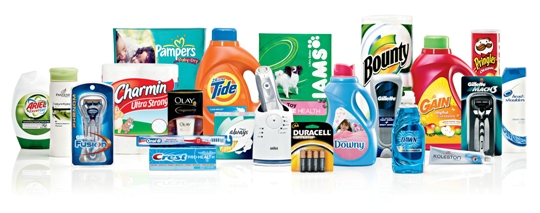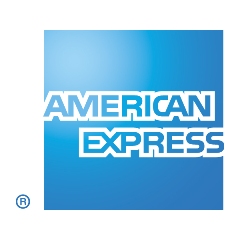Share
Steal These Marketing Ideas
6 Marketing & Branding Lessons from Way Outside the Photo Industry As PhotoShelter’s lead marketing guy, I’m focused day and night (and wee...
6 Marketing & Branding Lessons from Way Outside the Photo Industry
As PhotoShelter’s lead marketing guy, I’m focused day and night (and weekends) on growing our brand, reaching new audiences, communicating the value of our product, and of course, getting new customers and keeping them here. This sounds awfully familiar, right? I have a feeling you’re worried about all the same things.
One approach I find extremely helpful is to look outside our industry for inspiration. I look around a lot, noting the tactics, campaigns, customer interactions, and processes that seem to work really well. And then I think: “What could our version of this look like?” I suggest you do the same, and you’ll find that good ideas will occur in the strangest of places.
So, today I decided to consider the tactics of some of my favorite brands, and instead I’m asking “What could YOUR version look like?” If you’re considering ways to juice up your marketing, I give you six thought-provoking ideas you can borrow from some top brands.
1) Practice consistency. Ever experience this scenario? You’re at a restaurant, hungry as can be, and your meal finally arrives. You’re about to dive into your tasty burger and fries, when suddenly you realize there’s no ketchup on the table. You politely ask the waiter, who delivers a bottle of no-name generic brand ketchup. Deep in your soul, you’re DISAPPOINTED not to see that familiar, traditional bottle of Heinz Tomato Ketchup – a brand that has mastered both ubiquity and consistency (in the U.S.). However, poor bastard, without it your meal has sadly just gotten a little bit worse. The “other brand” ketchup bottle pours out quickly and tastes very different, likely sweeter, with a different consistency. The point is, Heinz has delivered on a promise of consistency for decades – creating cult users like me who consider other brands sub par. Customers appreciate that consistency – the relationship forms based on the expectation of more of the same, every time.

What’s your version? That’s easy. Determine what are the critical elements of your brand, your service, and your customer interaction. What pleased your last best client and made them come back for more? Was it the planning and communication before a shoot, your professionalism (or humor or efficiency) during the project, your classy method of delivery of the final images, your follow through after the fact? Which of these elements made the client so happy, they were compelled to tell other colleagues about you? Which elements would they be disappointed not to see next time? Get very clear about these essential elements, and be religiously disciplined in your execution of these items on your next project. Make a checklist if it helps.
If you find yourself at a loss for any specific brand elements that would make your clients as happy as that red glass bottle of Heinz ketchup makes me, here’s another exercise…
2) Map it out. If you want to differentiate yourself from your competition, you need to decide where you’re going to innovate. Carve out some thinking time and build what marketing wonks like me call a “touchpoint map.” From start to finish, list out the different points where your potential customers, paying customers, and past customers will have an opportunity to interact with your brand.
Procter & Gamble – the maker of 22 different billion dollar brands from toothpaste to tampons – does this when they’re looking for opportunities to innovate on everyday household items. For example, there are literally dozens of touchpoints in the lifecycle of a toothbrush. (Your old toothbrush falls apart, you go to the pharmacy, walk through the aisle, isolate a specific feature or price, make your comparisons, take it home, unwrap, wet it, add toothpaste, brush, brush again…) Then, they look for incremental and off-the-wall ways they can improve your experience at every point. That’s how they end up with brilliant in-store displays that catch your attention, and funky shaped toothbrush necks that can reach teeth you never knew you had.

What’s your version? Draw your touchpoint map. (This requires you to really, really know your customer, by the way. That’s a separate lesson altogether.) Consider how the customer evaluate services like yours, what they do after they’ve chosen, mid-project, the wrap up, etc. I bet you can come up with several ways to make your approach unique, or even ways to improve on the commonly accepted ways things get done. Choose the improvements you feel will have the biggest impact and test them out on your next client project.
3) Recognize you’re a service brand. Before PhotoShelter, I spent some quality career time at American Express, and I learned a ton. The American Express product is a charge card, a payment method, a tool that helps you buy things. There are plenty of competing credit cards, bank cards, and debit card products out there. Yet none can claim the strength of the American Express brand, which has generated a customer loyalty that goes way beyond the accumulation of Membership Rewards Points.
The Amex brand goal is to be “the world’s most respected service brand.” This mantra permeates through every touchpoint – product advertising, customer communications, customer service and more. Amex customers carry the card, but the feeling is more like someone’s “got their back.” Customers know they can depend on the company to SOLVE THEIR PROBLEMS – when a wallet gets lost, a product breaks, or a merchant pulls something funny, or a vacation goes awry due to a natural disaster, etc. The individual Amex customer service reps who work the phones every day try hard to do exactly this. And when problems occur and Amex comes up with the solution, they can pretty much count you as a customer for life.

What’s your version? Think about the pain points and problems your clients commonly endure. (Well, first things first, don’t *cause* those problems.) As Guy Kawasaki instructs in his book Rules for Revolutionaries – look for what makes your customers feel “powerless, pissed off, frustrated, and inconvenienced.” Ask them about these issues, become adept at pinpointing the causes and know the situations when they are likely to occur. Don’t just solve these problems when they come up, but go further. Try to structure your entire engagement around solving these common problems, and look for opportunities to “surprise and delight” with uncommonly strong service and delivery. This will obviously vary by specialty – but examples might include a wedding photographer like Missy McLamb who “autographs” the top of the box of final prints with a bold sharpie, or stock photographer Randy Santos who explores how every client manages their specific project, then finds ways to use tools like PhotoShelter to make that client’s job/life easier.
Once you’ve figured out how to differentiate your service by solving common problems, you have to market the heck out of it. Look for ways to communicate your approach upfront in the sales process, during, and after a project. Create a one-page sheet that describes your unique approach and how your process is designed to avoid pain points X,Y,Z. Review this with a prospect when you’re showing your portfolio. When you wrap a project, review the process and make sure the client is aware that your approach did exactly that.
I’m sure you can come up with all kinds of ways to “surprise and delight” to deliver outstanding service beyond simply solving problems too. Several years ago, I ate at an NYC restaurant, and they called the next day to thank me for dining there. They noticed I had their special “lobster crepe” appetizer and offered to call again to alert me when the special would be back. I didn’t spend a particularly large amount of money, yet their unique “high touch” treatment after the fact was an unexpected surprise that made me an evangelist — I returned at least 10 times and introduced many friends to the restaurant over time.
4) Bundle & package services. I stumbled across this gem at Whole Foods over the weekend – the “Everyday Deal Grill Pack” for $19.99. (Ok, there’s a completely unintended food theme unfolding here. Clearly marketing isn’t my only passion!) The bundle of products creates convenience for a consumer by combining chicken, sausage, and burgers, all ready for the grill. Microsoft has been doing this with its Office suite of applications for ages, by bundling together Word, Excel, Outlook & PowerPoint. How about at the movies? Do you often take the “super combo” offer to combine the drink plus popcorn for only $1 more? What about the McDonald’s “meal”? In each case, the buyer envisions using some or all of the elements of the bundle, and perceives there’s a discount vs. purchasing one by one. And in most situations, ends up paying more than they originally planned for.

What’s your version? Consider the different ways you can bundle and market your services. For lack of better terminology, would your clients appreciate a “super combo” dream team of photographer, producer, stylist, retoucher, graphic designer etc. Or even multiple photographers for a specific project, like an annual report that requires studio portraits plus shop floor imagery. What about photo + video + writing? The benefit in a photographer’s case (unless you’re delivering every element of the bundle) is that you’ll have multiple individuals selling the “super combo” as well. You may also ultimately command a premium as the client can offload more project elements on your team.
5) Borrow someone else’s brand. This concept is pretty simple, but can be executed in multiple ways. The key point – someone else “owns” the customer’s brand affinity or relationship. You connect, and sell their customers a new product/service under that same brand. Video game manufacturers, like Electronic Arts, have mastered this approach, whereby they license top brand-names from movies, sports, music and more. Just walking through my own home, everywhere I look I see Disney Princess branded products I’ve been suckered compelled to purchase for my daughter. B2B software companies take a different approach too, where they hook up with “resellers” (usually consulting firms) who then sell the hot new software into their clients’ businesses as part of a larger solution offered by the specific consulting firm.

What’s your version? Think of the spectrum of potential partners out there. Who carries influence with your desired customers? Design agencies? PR firms? Wedding & event planners? Local sporting goods stores? A local hotel? Can you swallow your pride and offer your photo services under their brand through a relationship where you both benefit? It is worth considering. The benefit is extended reach, and potentially an easier sell too. With multiple influencers pitching your services to potential customers they’ve already captured in some way, you can dramatically grow the pipeline of work coming your way.
6) Live it. I have a ton of brand envy for the folks who make Clif Bars, the “leader in all-natural and organic energy and nutrition foods and drinks.” As their story goes, founder Gary Erickson was on a bike ride, took a bite of a crappy energy bar, and was determined to make a better one. When you visit the Clif website, you immediately see this is a brand that lives and breathes exactly same way that its customers do. They participate in community events, support bike races and hiking outings, they’re interested in the same gear, and they care about sustainability and their impact on the environment. Their customers view the people behind Clif as “like me” — and that creates an enduring comfort and appreciation for the Clif brand.

What’s your version? Like all of the above, this will vary based on specialty, but the point is clear. Do you “get it” in a way that shows the customer you can relate? Can you show your potential clients that you’re either as knowledgeable (or more) about the subject than they are? Do you read what they read? Are you going to the same events they go to? What do they care most about, and how familiar are you with that subject?
I think this is where a generalist “photographer” is at a disadvantage today. I’m consistently amazed at the depth of domain knowledge a specialist photographer will bring to his or her shoot. The way they anticipate a story will unfold and position themselves to capture it. For example, we’ve had several specialist photographers write technique articles for us. In each of these articles, I am amazed by how deep the photographers know everything about their subjects. Like Darren Carroll’s piece on How to Photograph Golf Like an Expert, Brad Mangin’s article on baseball photography, and Chris Owyoung’s article on concert photography. They really, really know their subject and it shows, not only in their photos, but undoubtedly in their client interactions too, which explains why the best gigs come their way.
I could go on forever (although it looks like I already have) with more ideas. If you do find this useful, let me know and we’ll post features like this more often.
____________________________________________________________________________
Andrew Fingerman is PhotoShelter’s Vice President of Marketing. He enjoys helping photographers become better marketers, and recently authored the free e-book
Social Media for Photographers. You can join Andrew to talk Blogging for Photographers at Adorama Camera on July 15th. And if you’re still reading this, Andrew seriously recommends you try a PhotoShelter website for only $1.


